Types of geosynthetics are very diverse which are widely used in various engineering fields. Geosynthetics have proven to be among the most versatile and cost-effective ground modification materials. Their use has expanded rapidly into nearly all areas of civil, geotechnical, environmental, coastal, and hydraulic engineering. Geosynthetic materials are the synthetic products that are made from polymeric material and used in a wide ranges of civil engineering, transportation, environmental and sustainable building projects. As the leading geosynthetics manufacturers, wholesalers and suppliers, BPM had been dedicated to supplying all types of geosynthetics products and services to worldwide customers since its foundation in 2007. We have over 120 professional staffs and 16,000 square meters manufacturing factory equipped with state of the art production lines. Our main innovative, high quality geosynthetics products include geomembranes, geotextiles, geocells, geosynthetic clay liners (GCLs), drainage boards, geogrids, etc. All BPM brand HDPE geosynthetics had been certificated by the ISO9001, ISO14001, Soncap, SASO and BV certificates and passed the test of SGS and Intertek etc.
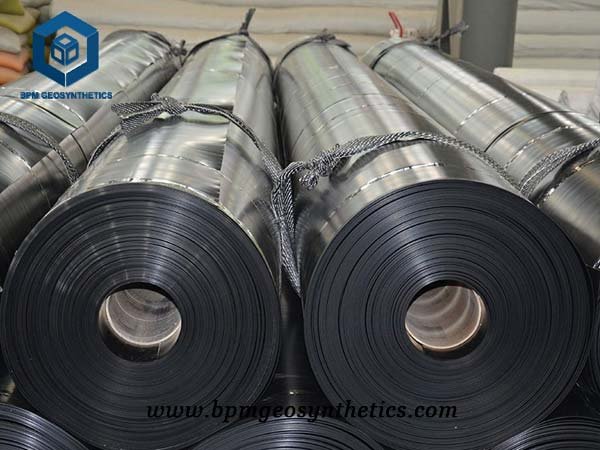
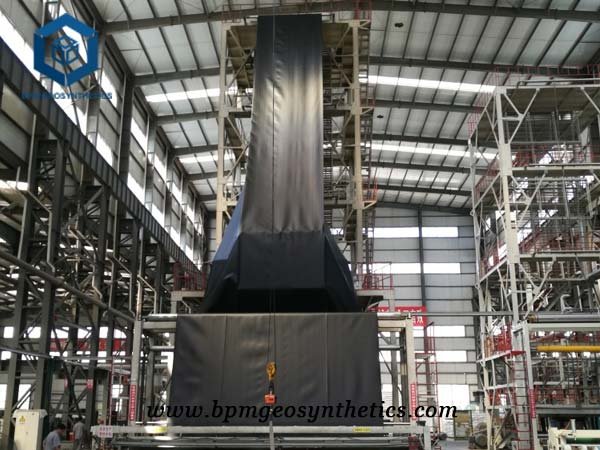
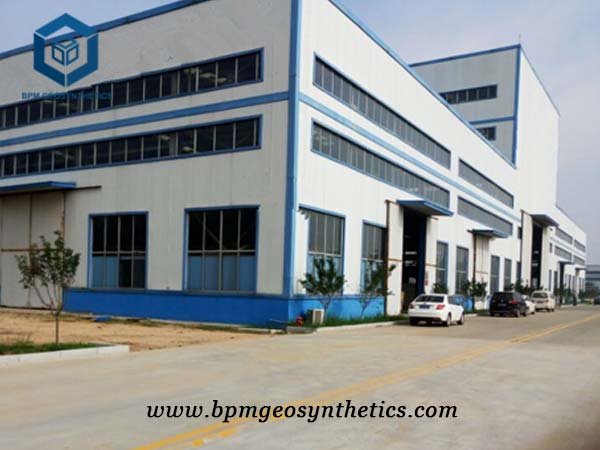
Advantages
Types of geosynthetics, including geotextiles, geomembranes, geonets, geogrids, geocomposites and geosynthetic clay liners, often used in combination with materials, offer the following advantages over traditional materials:
Space Savings
Sheet-like, various types of geosynthetics take up much less space in a landfill than do comparable soil and aggregate layers.
Material Quality Control
Soil and aggregate are generally heterogeneous materials that may vary significantly across a site or borrow area. Geosynthetics on the other hand are relatively homogeneous because they are manufactured under tightly controlled conditions in a factory. They undergo rigorous quality control to minimize material variation.
Construction Quality Control
Many types of geosynthetics are manufactured and often factory “prefabricated” into large sheets. This minimizes the required number of field connections, or seams. Conversely, soil and aggregate layers are constructed in place and are subject to variations caused by weather, handling and placement.
Cost Savings
Many different types of geosynthetics are generally less costly to purchase, transport and install than soils and aggregates.
Technical Superiority
All types of geosynthetics have been engineered for optimal performance in the desired application.
Construction Timing
All types of geosynthetics can be installed quickly, providing the flexibility to construct during short construction seasons, breaks in inclement weather, or without the need to demobilize and remobilize the earthwork contractor.
Material Deployment
Layers of geosynthetics are deployed sequentially, but with a minimum of stagger between layers, allowing a single crew to efficiently deploy multiple geosynthetic layers.
Material Availability
Numerous suppliers of most geosynthetics and ease of shipping insure competitive pricing and ready availability of materials.
Environmental Sensitivity
Geosynthetic systems reduce the use of natural resources and the environmental damage associated quarrying, trucking, and other material handling activities.
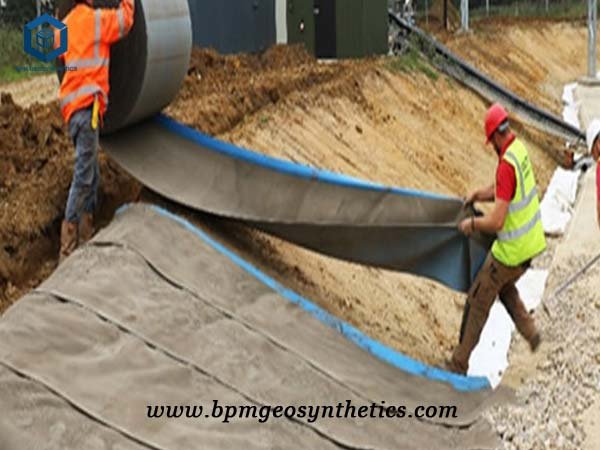
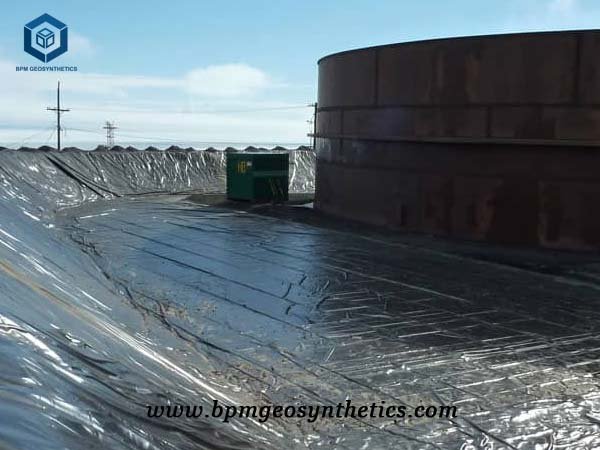
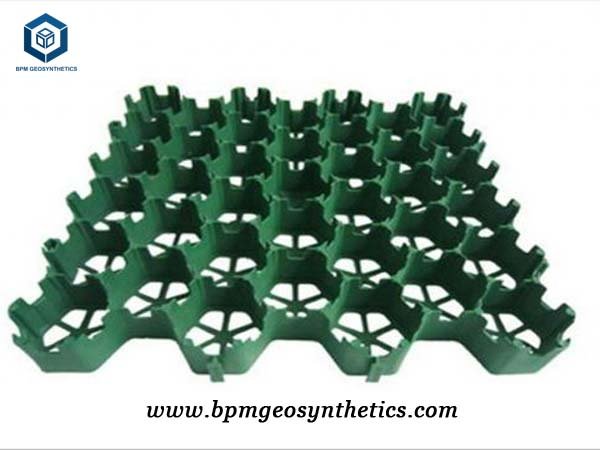
Types of Geosynthetics
Various types of geosynthetics are an established family of geomaterials used in a wide variety of civil engineering applications. Many polymers (plastics) common to everyday life are found in geosynthetics. The most common are polyolefins and polyester,although rubber, fiberglass, and natural materials are sometimes used. Geosynthetics may be used to function as a separator, filter, planar drain, reinforcement, cushion or protection, or as a liquid and gas barrier. The various types of geosynthetics available, along with their specific applications, are discussed in subsequent sections.
Geotextiles
Almost all geotextiles are manufactured from either polyester or polypropylene. Polypropylene is lighter than water (specific gravity of 0.9), strong and very durable. Polypropylene filaments and staple fibers are used in manufacturing woven yarns and nonwoven geotextiles. High tenacity polyester fibers and yarns are also used in the manufacturing of geotextiles. Polyester is heavier than water, has excellent strength and creep properties, and is compatible with most common soil environments. There are two principal geotextile types, or structures: wovens and nonwovens. Other manufacturing techniques, for example knitting and stitch bonding, are occasionally used in the manufacture of specialty products.
Nonwovens. Nonwoven geotextiles are manufactured from either staple fibers (staple fibers are short, usually 1 to 4 inches in length) or continuous filaments randomly distributed in layers onto a moving belt to form a felt-like “web”. The web then passes through a needle loom or other bonding machine interlocking the fibers or filaments. Nonwoven geotextiles are highly desirable for subsurface drainage and erosion control applications as well as for road stabilization over wet moisture sensitive soils.Geogrids
Geogrids are single or multi-layer materials usually made from extruding and stretching high-density polyethylene or polypropylene or by weaving or knitting and coating high tenacity polyester yarns. The resulting grid structure possesses large openings (called apertures) that enhance interaction with the soil or aggregate. The high tensile strength and stiffness of geogrids make them especially effective as soil and aggregate reinforcement.
Geonets
Geonets are made of stacked, criss-crossing polymer strands that provide in-plane drainage. Nearly all geonets are made of polyethylene. The molten polymer is extruded through slits in counter-rotating dies, forming a matrix, or “net” of closely spaced “stacked” strands. Two layers of strands are called “bi-planar”. Three layers are called “tri-planar”.
Geocomposites
The possibility of combining the superior features of various geosynthetics have rendered a host of so called “geocomposite” materials. There is a large number of possibilities in assembling different materials, only limited by one’s ingenuity and imagination.
Drainage Geocomposites
The most common geocomposite configuration is known as a drainage geocomposite. Drainage geocomposites are composed of a geotextile filter surrounding either a geonet (blanket drain), a thick preformed core (panel or edge drain), or a thin preformed core (wick drain). Some applications of drainage geocomposites are blanket drains, panel drains, edge drains and wick drains.
Blanket Drains
Blanket drains are commonly used as leachate or infiltration collection and removal layers within landfills. Recently, geocomposite blanket drains have been used to enhance road base drainage.
Panel Drains. Panel drains can be placed adjacent to structures to reduce hydrostatic pressures.
Edge Drains
Edge drains are often used adjacent to pavement structures to collect and remove lateral seepage from the road base.
Wick Drains
Wick drains are pushed deep into the ground, providing drainage paths to expedite the consolidation of saturated soils, significantly decreasing the settlement time of embankments over soft soils.
Other Geocomposites
Many other geocomposite products have been developed. For example, high strength yarns have been knitted into a nonwoven to produce a product that is both strong (via the yarns) and which has controlled permeability characteristics (provided by the nonwoven).
Geomembranes
Geomembranes are relatively impermeable sheets of plastic. There are two general categories of geomembranes which are calendered and extruded.
Calendered Geomembranes. Calendered geomembranes are formed by working and flattening a molten viscous formulation between counter rotating rollers. Polyvinyl chloride (PVC), chlorosulfonated polyethylene (CSPE), chlorinated polyethylene (CPE), more recently, polypropylene (PP) are the most common calendered geomembranes. Specialty ethylene interpolymer alloy (EIA) geomembranes are used for unique applications. In most cases these engineered films are supported by a textile that provides tensile strength and enhances tear and puncture resistance.
Extruded Geomembranes. Extruded geomembranes are manufactured by melting polymer resin, or chips, and forcing the molten polymer through a die using a screw-extruder. The sheet is formed either by a flat horizontal die or through a vertically oriented circular die to form either a flat wide sheet advanced on a conveyor belt, or cylindrical tube of “blown film”, filled with air which is collapsed and pulled by nip rollers mounted high above the die. Blown film geomembranes must be slit prior to wind-up. Common extruded geomembranes include high-density polyethylene (HDPE) and various lower density, or very flexible, polyethylenes (VFPE). Polypropylene (PP) is a relatively new type of extruded (as well as calendered) geomembrane.Geosynthetic Clay Liners (GCLs)
Geosynthetic clay liners (GCLs) include a thin layer of finely-ground bentonite clay. When wetted, the clay swells and becomes a very effective hydraulic barrier. GCLs are manufactured by sandwiching the bentonite within or layering it on geotextiles and/or geomembranes, bonding the layers with needling, stitching and/or chemical adhesives. The preferred sodium bentonite clay occurs naturally in Wyoming, North Dakota and Montana in the U.S. GCLs are commonly used to augment or replace compacted clay layers.
Geopipe
Another significant product which has been “adopted” as a geosynthetic is plastic pipe. The specific polymer resins used in the manufacturing of plastic pipes are: high-density polyethylene (HDPE), polyvinyl chloride (PVC), polypropylene (PP), polybutylene (PB), acrylonitrile butadiene styrene (ABS), and cellulose acetate buytrate (CAB). There is a wide variety of civil engineering applications for these products, including: highway and railway edge drains, interceptor drains, and leachate removal systems.
Geofoam
A newer category of geosynthetic product is geofoam, which is the generic name for any foam material utilized for geotechnical applications. Geofoam is manufactured into large blocks which are stacked to form a lightweight, thermally insulating mass buried within a soil or pavement structure. The most common type of polymer used in manufacturing of geofoam materials is polystyrene. Typical applications of geofoams include: within soil embankments built over soft, weak soils; under roads, airfield pavements and railway track systems subject to excessive freeze-thaw conditions; and beneath on-grade storage tanks containing cold liquids.
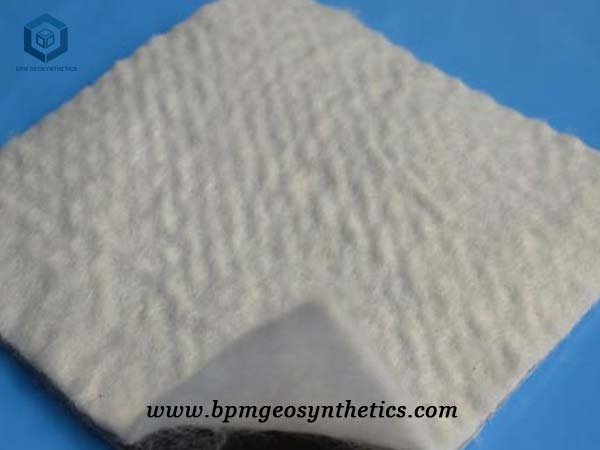
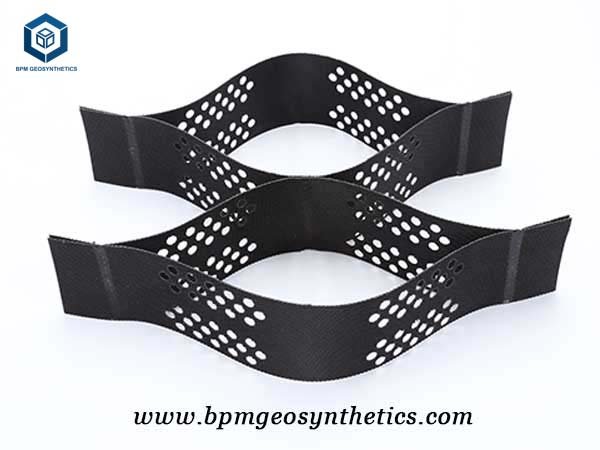
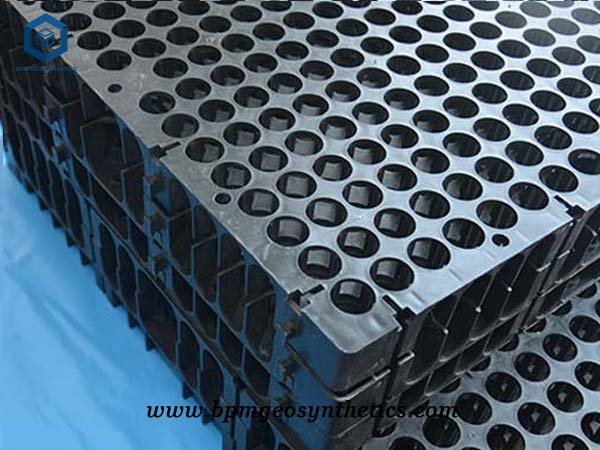
About BPM
BPM had provided many types of effective and state of the art geosythetics products to over 36 countries. Our main innovative, high quality geosynthetics products include geomembranes, geotextiles, geocells, geosynthetic clay liners (GCLs), drainage boards, geogrids, etc. BPM brand HDPE geosynthetics had been certificated by the ISO9001, ISO14001,OHSAS18001 Soncap, SASO and BV certificates and passed the test of SGS and Intertek etc. Our main customers are from Australia, France, Sweden, UK, Hong Kong, Hungary, New Zealand, Poland, Mexico, Ecuador, Brazil, Pakistan, Bangladesh, Thailand, Vietnam, Malaysia, Indonesia, Singapore, Philippines, Sri Lanka, India, UAE, Saudi Arabia, Qatar, Kenya, Ghana, Ethiopia, Somalia, Nigeria, South Africa, Swaziland, Mongolia etc.
BPM is not only manufacturing best quality geosynthetics, geomembrane, geotextile products but also providing professional design and installation service. OEM and ODM are also available. If you have any questions or inquiries, please fill and submit the following form, we will reply as soon as possible.





